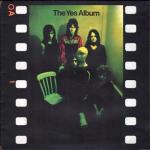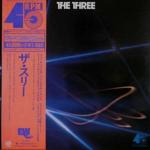
Pink Floyd Hot Stamper Pressings Available Now
Reviews and Commentaries for Dark Side of the Moon
More Customer Letters for Dark Side of the Moon
One of our good customers had this to say about some Hot Stampers he purchased recently:
Dear Tom and Fred,
Just a note to say I’ll be keeping the White Hot of DSOTM. Fred, thank you for reaching out to me about it. I really appreciate that.
This is one of those records where I already had a handful of well-regarded pressings. How intriguing that it was such an obscure pressing that won your shootout! [1]
I compared the WHS to my early US pressing (Ken Perry mastered [2]), my MoFi [3], a Japanese “blue triangle” pressing, and of course, the 2016 remaster [4].
Sure, there are tons of sought-after pressings that go for prices even more exorbitant than what I paid you, none of which I’ve heard, so I guess it’s not a proper shootout. But, at least among the ones I have, the WHS bested them all handily. In each of the others I was able to find something that I could appreciate, that on its own compared well to the WHS. This is such a great, and well-recorded, album that any pressing of it is going to have something worthwhile to offer.
The Japanese pressing came closest to the WHS. [Doubtful we would agree with you on the merits of this Japanese pressing. We rarely like them, and we like them less with each passing year.]
At the other end of the spectrum the 2016 remaster, noted for its great bass, just sounded clogged and thudding [5].
Compared to each of them, the WHS is huge and clear. It had ALL the positive attributes I heard in the others. Is it 15x better than my next-best copy? Objectively, probably not. But, subjectively, it must be, since I’m keeping it.
Since the hot stamper arrived the day after my Legacy Signature III’s got here, it was one of the first records I played on them. What a great pairing they are!
This was of course the first mini-shootout I’ve done using the Legacys. What a great window into a record these speakers provide. I switched back to my Bowers and Wilkins 805s and re-ran the shootout, just to see if my impressions would still align. They did, with the hot stamper providing more vividness and a bigger sound than the other pressings did, even on the B&Ws.
But on the bigger speakers the hot stamper stands apart from the others by a wider margin.
Thank you both for all the great records you find, and thank you Tom for the stereo advice. You keep doing what you’re doing, and I’ll keep doing what I’m doing.
Aaron
Aaron,
Glad to hear you are a Legacy man now. We love our Legacy Speakers and can’t imagine doing shootouts without them. (The old ones, not the newer models.) The Big Speaker sound, at loud levels, is what allows a record like Dark Side of the Moon to be every bit the immersive experience we know it can be if you have a top quality pressing to play. Now you know it too.
And thanks for doing the shootout so that you know exactly what our best copies of Dark Side are capable of. If you make any improvement to your system, be sure to go back to this Dark Side and hear the change for yourself.
Then play any of these other pressings and note how the gap has widened. That is our experience and we expect you will find the same differences in your listening room as well.
The following notes may be of general interest:
[1} Obscure pressings that sound better than all others are our bread and butter here at Better Records! There are only two sets of stampers for the record you bought that win shootouts, and without those exact stampers you would not have heard the sound you so clearly heard. There is a stamper for the pressing you bought that has the same cover and the same label, made in the same country, but with sound that is pretty subpar. We bought some because we owed it to ourselves and our customers to try every potentially good stamper we knew was out there. We bombed, but we do that a lot and never worry about it. At these prices the winners more than pay for the losers.
This is why it is difficult to take anyone seriously who thinks they know the right pressings of DSOTM. We had to play a dozen or more different ones in order to find the killer copy you now own. Who in his right mind would do such a thing?
[2] As a rule we very much like Ken Perry‘s work for Capitol, but it is doubtful that anyone ever gave him a master tape of DSOTM to work with.
[3] Many, many years ago we did a little shootout for the MoFi, which you can read about here. We should note that the last time we dropped the needle on one we found it way too bright. The Crime of the Century MoFi that I used to sort of like was the same way, way too bright. Our system ten or twenty years ago used to be darker and much more forgiving. Those dark days are gone and they sure won’t be coming back, which simply means that it is the rare MoFi record that we can tolerate anymore. (Here are some of the ones we found the least irritating.)
[4] The Heavy Vinyl pressing that Doug Sax cut may have been made from the real master tape, but it had to go through Kevin Gray’s cutting system, and it’s the rare record that survives that trip. We reviewed his version here, almost twenty years ago now.
[5] We thought it sounded very bright. I didn’t pay much attention to the lower frequencies, the higher ones were just way too boosted. (more…)









 More of the Music of Neil Young
More of the Music of Neil Young


